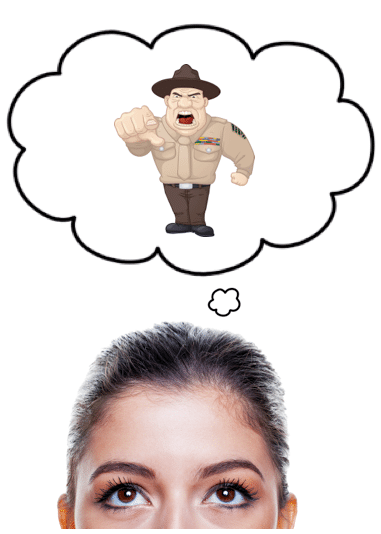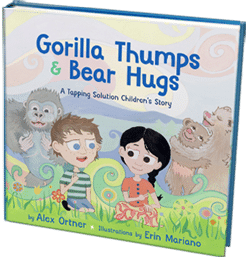 Imagine walking down the street with your family. Your partner and kids run up ahead to buy some candy. And then a bomb explodes in the candy shop.
Imagine walking down the street with your family. Your partner and kids run up ahead to buy some candy. And then a bomb explodes in the candy shop.
No survivors.
Veterans who return home from combat have lived through these types of experiences, along with many others, over prolonged periods of time - and they are as traumatizing as the above scenario.
Needless to say, many of these men and women come back from war wounded from that trauma.
What Exactly Is PTSD?
PTSD stands for Post-Traumatic Stress Disorder, and it is the emotional fallout from deeply traumatizing experiences.
The National Institute of Mental Health says that to be diagnosed by a physician, a patient must have all of the following:
- At least one re-experiencing symptom (flashbacks or bad dreams)
- At least one avoidance symptom (staying away from people or places connected to the event)
- At least two arousal and reactivity symptoms (insomnia, sudden anger, or being easily startled)
- At least two cognition and mood symptoms (feeling guilty, carrying a negative self image, or not being able to enjoy life)
In 2015, a JAMA Psychiatry study confirmed that over 200,000 Vietnam War veterans still have PTSD. With numbers of deployed troops in Afghanistan and Iraq continuing to rise, it’s clear that an effective treatment is necessary for the sake of both the individuals involved and our society as a whole.
A Study Gives Hope
Researchers have conducted many studies about the effectiveness of EFT on a variety of problems. One very compelling study was facilitated by Church and Hawk.
They found that the Emotional Freedom Technique effectively treated 30 veterans diagnosed with PTSD to the point where after treatment, 90% of the participants no longer met the diagnostic criteria, as compared to only 4% of the control group.
At the end of the study, the 29 individuals who were in the control group were then treated with EFT. After just three sessions, 60% of them no longer met the criteria for PTSD. This increased to 86% after three more treatments.
At six months, of the 49 participants remaining in both groups who had been treated with EFT therapy, 80% of them continued to remain below the diagnostic criteria for PTSD.
This was a very significant study, given that most of the vets were healed in a very short period of time.
But could the results be repeated? The authors of a second study, which replicated the first, noted how important replication is in establishing a scientific body of knowledge. Also, “…replication of studies of EFT is particularly important since the reported therapeutic effects are both large and rapid, yet the procedure itself can evoke skepticism (Feinstein, 2009).” (Geronilla 38)
SECOND TIME AROUND: EFT for PTSD
Researchers in the second study recruited 58 veterans who met the diagnostic criteria for PTSD. 26 in the control group received “treatment as usual” and the other 32 received six one-hour office or telephone Emotional Freedom Technique sessions or video conferencing calls. All 13 practitioners were certified in EFT and were instructed to use only EFT in the therapy.
For the EFT group, researchers asked patients to make a list of the traumatic events they had experienced for use in the treatment statements. Examples include being injured in an explosion, watching friends or colleagues die, or killing an enemy. Researchers used the less intense events first, allowing the participant to gain trust and confidence in the process. Participants also included their thoughts and bodily sensations, which are a key piece of the EFT process.
Participants were also encouraged to use EFT between sessions to reduce intensity of distress.
After EFT six sessions, there was a significant reduction in all scores compared to scores at pre-treatment as well as scores after three sessions. Score reductions were maintained at three-month and six-month follow-ups. No significant differences were detected between scores after six sessions and follow-up scores after three months and six months, indicating durable improvements. The researchers found that these results replicated the first study and that this “…indicates that EFT is an evidence-based practice that is highly effective at reducing symptom severity in veterans with PTSD.” (Geronilla 37).
Not only did this replication study have the same findings as the first, it also was consistent with a meta-analysis (where researchers look at and analyze many studies on the same topic) that found EFT an effective treatment for PTSD in very short periods of time and with only four-six treatment sessions.
A KINDER, GENTLER PTSD TREATMENT
In other treatment modalities, PTSD patients are typically asked to remember in detail the traumatizing event. This can be extremely difficult for patients, and the therapist has to be extremely careful not to re-traumatize. Because patients create their own lists of events, EFT practitioners can ease gradually into the difficult memories, and tapping on the acupressure points actually triggers the body’s natural relaxation processes. “…EFT shows promise as a treatment for PTSD that is both effective and safe.” (Geronilla 39)
WEAKNESSES
Many of the veterans who initially agreed to participate ended up dropping out. A research study with a larger number of subjects would make a stronger case for EFT. Researchers suggest clinicians diagnose participants, before and after treatment. Finally, the alternative PTSD treatments, Cognitive Behavioral Therapy or EMDR, could be used in the control group to provide a scientifically specific comparison of the modalities.
A Tale of Two Trials – Tapping for PTSD is courtesy of: http://tappingsolution.com
 A few weeks back, I was being interviewed by Dr. Ed Osburn for his podcast, “The Chiropractic Philanthropist”. He had invited me on to talk about my new book,
A few weeks back, I was being interviewed by Dr. Ed Osburn for his podcast, “The Chiropractic Philanthropist”. He had invited me on to talk about my new book,  Dr. Osburn shared that in 2009, he was running an extremely busy practice, training for a 100 mile race and just going, going, going non-stop. We tapped on some of the feelings around that time and also worked on what his life would be like if his pain went away completely. We identified some fears about the pain going away because if the pain went away…then he’d have to go back to his life in 2009, and he didn’t want that…
Dr. Osburn shared that in 2009, he was running an extremely busy practice, training for a 100 mile race and just going, going, going non-stop. We tapped on some of the feelings around that time and also worked on what his life would be like if his pain went away completely. We identified some fears about the pain going away because if the pain went away…then he’d have to go back to his life in 2009, and he didn’t want that… December is filled with celebratory foods and drinks that are good for our spirit but not so good for our waistline. Come January 1st the joy and carefree spirit of the holidays leave us and a drill sergeant moves into our head and tells us the fun is over and it’s time to diet.
December is filled with celebratory foods and drinks that are good for our spirit but not so good for our waistline. Come January 1st the joy and carefree spirit of the holidays leave us and a drill sergeant moves into our head and tells us the fun is over and it’s time to diet.


 Perhaps it's just because of my "story"…
Perhaps it's just because of my "story"…
 Do you sometimes hear a little voice inside you that says, “You’re not enough”?
Do you sometimes hear a little voice inside you that says, “You’re not enough”?

 I remember sitting on the couch with my wife Karen, having finally gotten our three young kids to bed, and saying to her, "Nobody told us that it would be like this!" We were heartbroken about a conversation we'd just had with our oldest son Malakai...
I remember sitting on the couch with my wife Karen, having finally gotten our three young kids to bed, and saying to her, "Nobody told us that it would be like this!" We were heartbroken about a conversation we'd just had with our oldest son Malakai...
